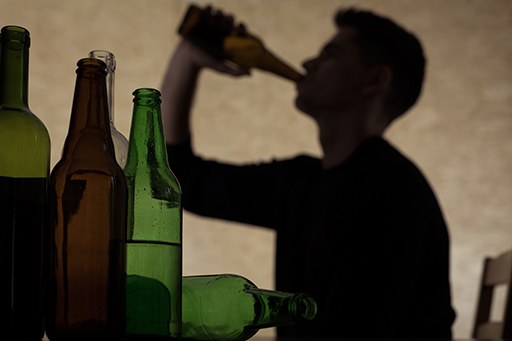1 Calculating alcohol consumption
In 1989, the UK's leading alcohol producers formed the Portman Group to:
- promote responsible drinking
- help prevent alcohol misuse, and
- foster a balanced understanding of alcohol-related issues.
In the early 2000s, they established the Drinkaware campaign which gives comprehensive, online advice to the public on responsible drinking. Since then, the website (www.drinkaware.co.uk) has been widely promoted by the industry on drinks packaging and advertisements, leading to it becoming the primary source of sensible drinking information for consumers.
One of the challenges for consumers is to identify exactly how much alcohol they are drinking.
Activity 1 Calculating your alcohol consumption
Think about the alcohol you have consumed over the past week. Are you able to record how much you have consumed? If you don’t consume alcohol yourself you could always ask a friend or colleague to do this for you. Write down any difficulties you can think of that could be associated with calculating how much alcohol you (or anyone else) consumes?
Discussion
There are a number of reasons why it is difficult to measure the amount of alcohol that people consume. Some possible reasons are:
- The concentration (strength) of alcohol varies between different types of drink and few people are aware of the difference. Does a glass of red wine contain more or less alcohol than the same volume of vodka?
- How have you recorded the amount of alcohol consumed? Have you recorded number of glasses, pints, or approximate volumes of spirits added to a mixer? Are you sure about the exact amount of spirit added to a drink served at home (as opposed to a fixed measure of spirits dispensed via an optic)?
- The standard volume of a ‘drink’ varies between types of drink and between countries. How does the alcohol content of an English pint of real ale compare with a half-litre of German lager? Or an American ‘ounce’ or a British ‘gill’ of spirits? In Australia, beer is sold by the pint (US 16 fl oz instead of the imperial UK 20 fl oz), called the ‘schooner’ or a ‘pot’. It can be quite confusing.
- Different ways of referring to the amount of alcohol in a drink can also make comparison difficult. For example, wine, beer and spirit labels usually give the alcohol content as a percentage of the liquid in the bottle. ‘Drink safely’ advice generally refers to units of alcohol defined in terms of ‘a glass of wine’ or a ‘half-pint of beer’ or a ‘measure of spirits’. Other units of measurement include grams per day, although this is less common.
Simply asking people to estimate how much alcohol they drink in (say) a typical week often produces inaccurate results. When drinks are poured at home, the measure is usually uncontrolled so estimates of total consumption tend to be even more inaccurate.
Figure 1 shows red wine being poured into three different sizes of wine glass – how would you know how many units of alcohol are present in each one?

Population surveys consistently find that drinkers’ own estimates of the total amount consumed account for only 40–60 per cent of the alcohol sold. People who drink a lot of alcohol may claim they drink less when asked because excessive drinking is disapproved of in some societies. Conversely, some individuals may exaggerate their drinking because it carries high status among their peers.
The pattern of alcohol consumption is even more important than the total amount consumed in terms of the impact on health. For example, drinking while eating seems to result in less harm to health than drinking at other times. Drinking large amounts in one go – particularly of spirits such as whisky or vodka – also has a much higher health risk than drinking the same quantity of alcohol in a more dilute form (e.g. beer or wine) in smaller amounts spread over several days. So-called ‘binge drinking’ of large amounts of alcohol, as illustrated in Figure 2, is linked to an increase in the risk of injuries and cardiovascular diseases.
Any protective effects of low-risk drinking patterns are completely lost if someone engages in a heavy drinking episode at least once a month – even if the average level of alcohol consumption is low. A heavy drinking episode is defined by the World Health Organisation as consumption of more than 60 g of pure alcohol on at least one single occasion a month (see the article Heavy episodic drinking among drinkers from the WHO [Tip: hold Ctrl and click a link to open it in a new tab. (Hide tip)] ).
However, of all these, you may be most familiar with guidelines for alcohol consumption described in terms of the number of units of alcohol. The next section explains what these units are and how they relate to grams and millilitres of alcohol.

